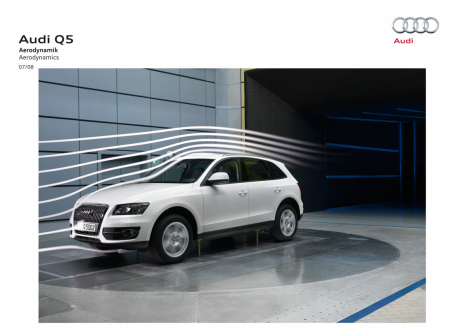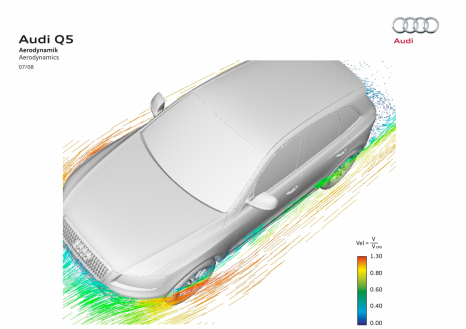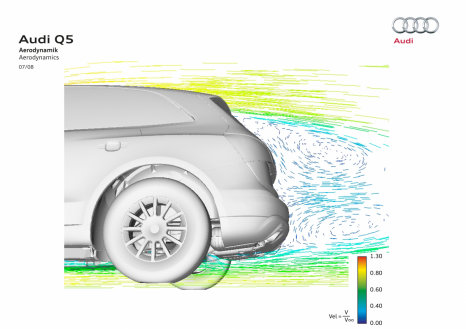Aerodynamics
Aerodynamic drag plays an important role in customers’ driving behavior. In cars such as the A8, which are used predominantly for long-distance travel, aerodynamic drag also accounts for almost half of the running resistance. Outfitted with the 4.2 FSI, the luxury sedan has a drag coefficient of 0.26 and a frontal area of 2.41 sq m (25.94 sq ft). Low lift coefficients at the front and rear axles ensure confident stability at highway speeds.
The work in the wind tunnel is extremely beneficial in terms of efficiency. Aerodynamic engineers were able to reduce the drag coefficient by 0.05 compared with the initial design. In the EU driving cycle, this improvement saves just under 0.2 liters of fuel per 100 km, equivalent to a CO2 reduction of over 4 g/km (6.44 g/m).** The effect is much more pronounced in everyday driving. At an average highway cruising speed of 130 km/h (80.78 mph), this results in a saving of 1.3 liters per 100 km.
Even in the compact A1, Audi has extensively optimized the body in every detail, from the wheels to the spoiler lips at the tail lights to the small corners that connect the roof spoiler to the body. Visually understated, they improve separation of the air flow and thus increase aerodynamic stability.
In Ingolstadt, Audi operates three wind tunnels that can generate wind speeds of up to 300 km/h (186.41 mph). The largest of the three facilities is dedicated to achieving optimal airflow around vehicles. In the thermal wind tunnel, cooling issues are the focus. Finally, the climate wind tunnel produces temperatures ranging from minus 25 to plus 55 degrees Celsius (minus 13 to plus 131 degrees Fahrenheit), with a heating capacity of up to 1.2 kW per square meter and artificial rainfall of 2,500 liters (660.43 US gal) of water per hour.
If scheduling allows it, Audi also grants external customers access to the wind tunnels. Ski jumpers, racing cyclists and star swimmers such as the Australian Ian Thorpe have already used the wind tunnels to improve their posture and equipment.
**Figures depend on the tires/wheels used.
Status: 2011


